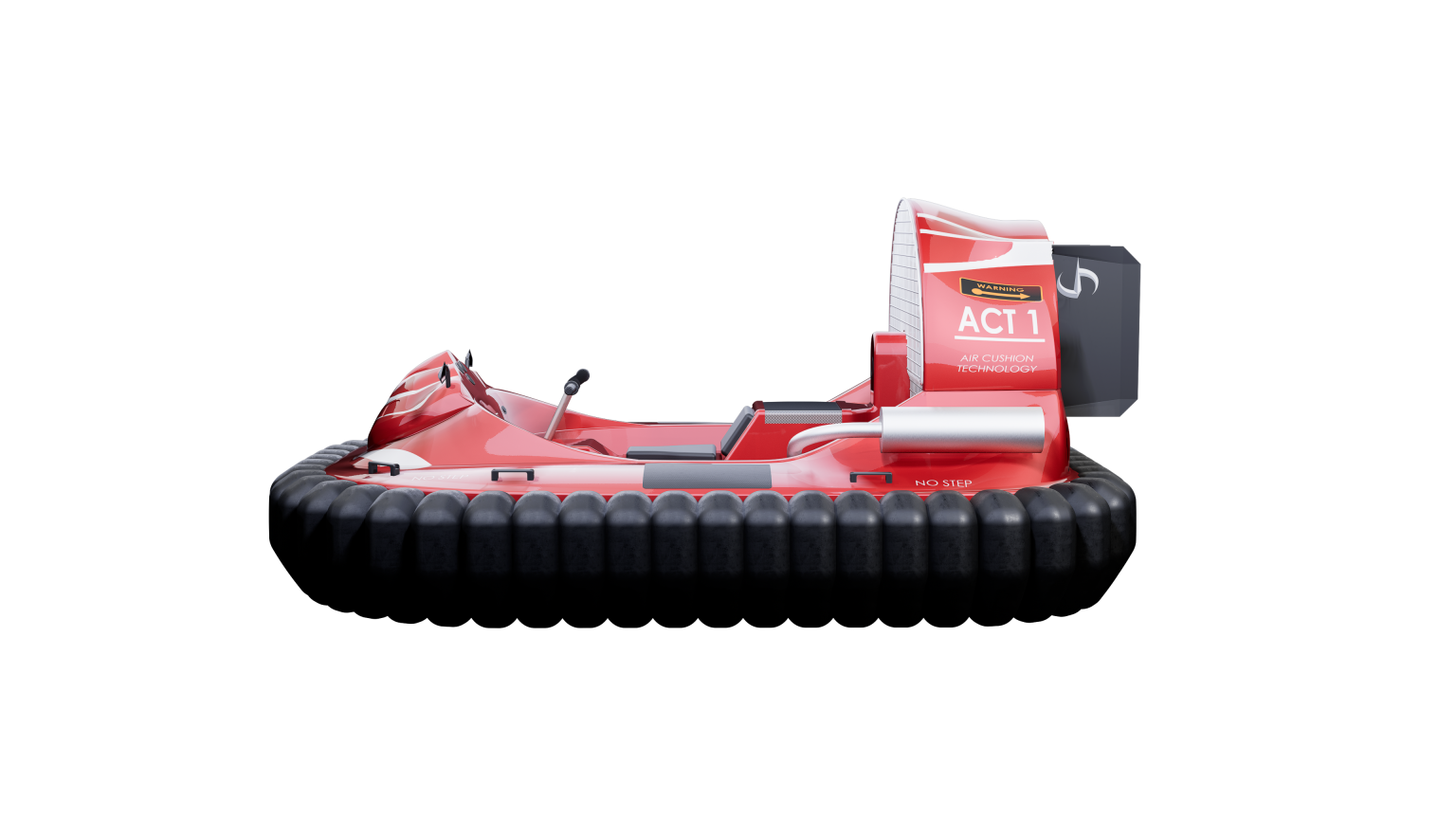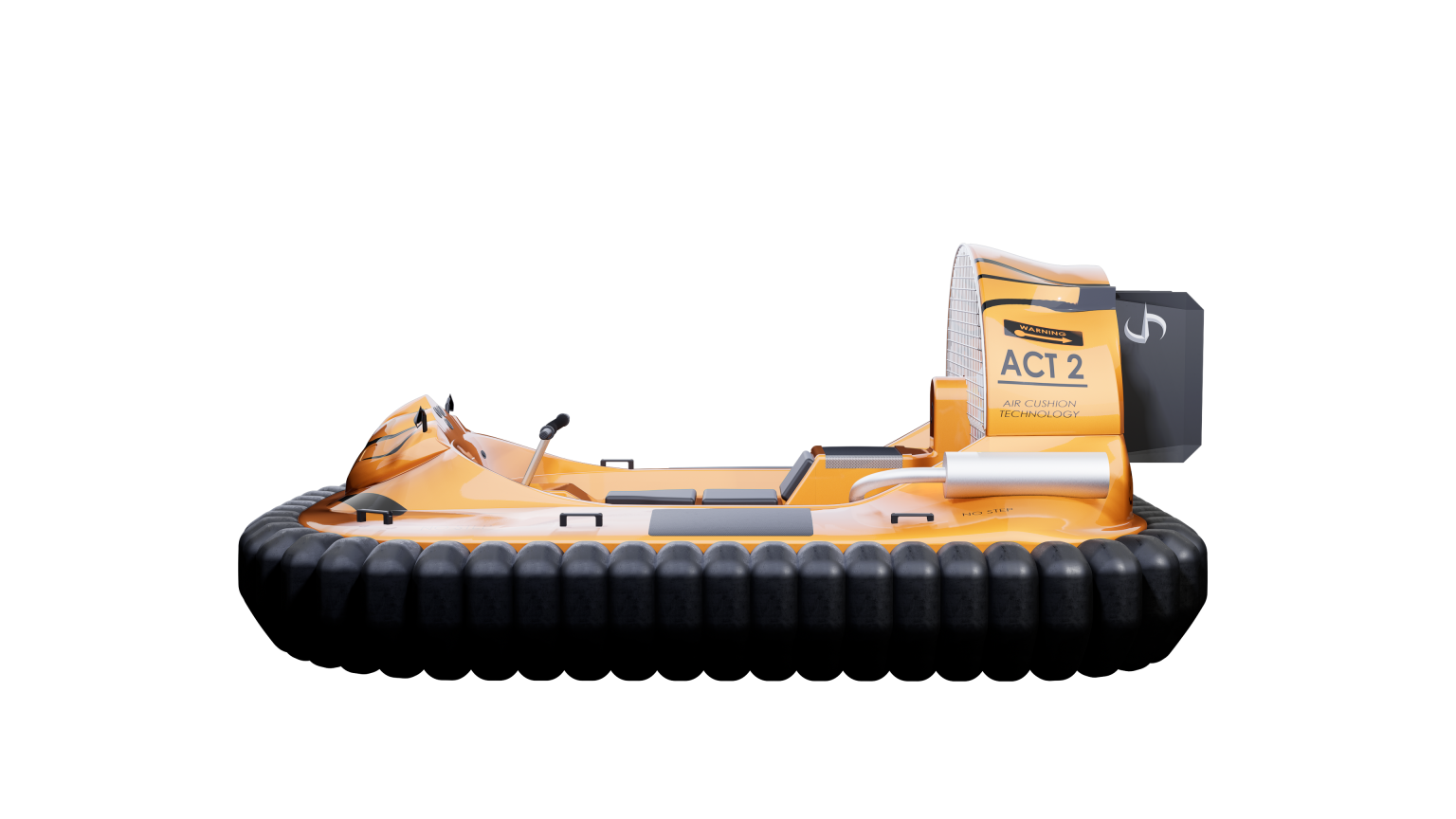+90 216 606 54 07 info@gurengineering.com
1-Seater Hovercraft
The art of building
Hovercraft give you wings!
- Client Jedy Hovercraft
- Category Advance Engineering, Naval Architecture
- Date 2022
- URL www.jedyhovercraft.com
This project aims to design, develop, and prototype a cutting-edge 1-seater hovercraft. The hovercraft will be a versatile and agile personal transport solution, capable of seamlessly transitioning between various terrains, including water, marshlands, ice, and flat surfaces. The project will integrate innovative technologies to create a lightweight, efficient, and user-friendly hovercraft for recreational and short-distance transportation purposes.
Objectives:
Hovercraft Design and Prototyping: Develop a concept design for the 1-seater hovercraft, incorporating aerodynamic principles, stability, and ergonomic considerations. Build and test prototypes to validate the design and performance in different environments.
Propulsion System: Design an efficient propulsion system that enables the hovercraft to hover over various surfaces. Explore options such as air-cushion systems, thrust fans, or other innovative propulsion technologies to achieve optimal lift and maneuverability.
Lightweight Materials and Structure: Utilize advanced lightweight materials and structural design to ensure the hovercraft remains lightweight for efficient energy consumption and maneuverability without compromising durability and safety.
Control and Navigation System: Implement a user-friendly control system that allows easy navigation for the pilot. Consider incorporating gyroscopic stabilization and automation features to enhance stability and ease of operation.
Safety Features: Integrate safety features such as collision detection, emergency braking systems, and flotation devices to ensure the well-being of the pilot in various operational scenarios.
Energy Efficiency: Optimize the hovercraft's energy consumption by exploring eco-friendly propulsion systems, regenerative braking, and energy-efficient components. Aim for a balance between performance and sustainable energy usage.
Noise Reduction: Implement technologies to minimize noise emissions during hovercraft operation, ensuring a quieter and more environmentally friendly user experience.
Testing and Validation: Conduct rigorous testing in controlled environments to validate the hovercraft's performance, stability, and safety. Evaluate its capabilities on water, land, and other challenging terrains.
Regulatory Compliance: Ensure the hovercraft design complies with relevant safety and regulatory standards for personal recreational vehicles, obtaining necessary certifications for commercialization.
All photos taken from jedyhovercraft.com from public shared documents.



